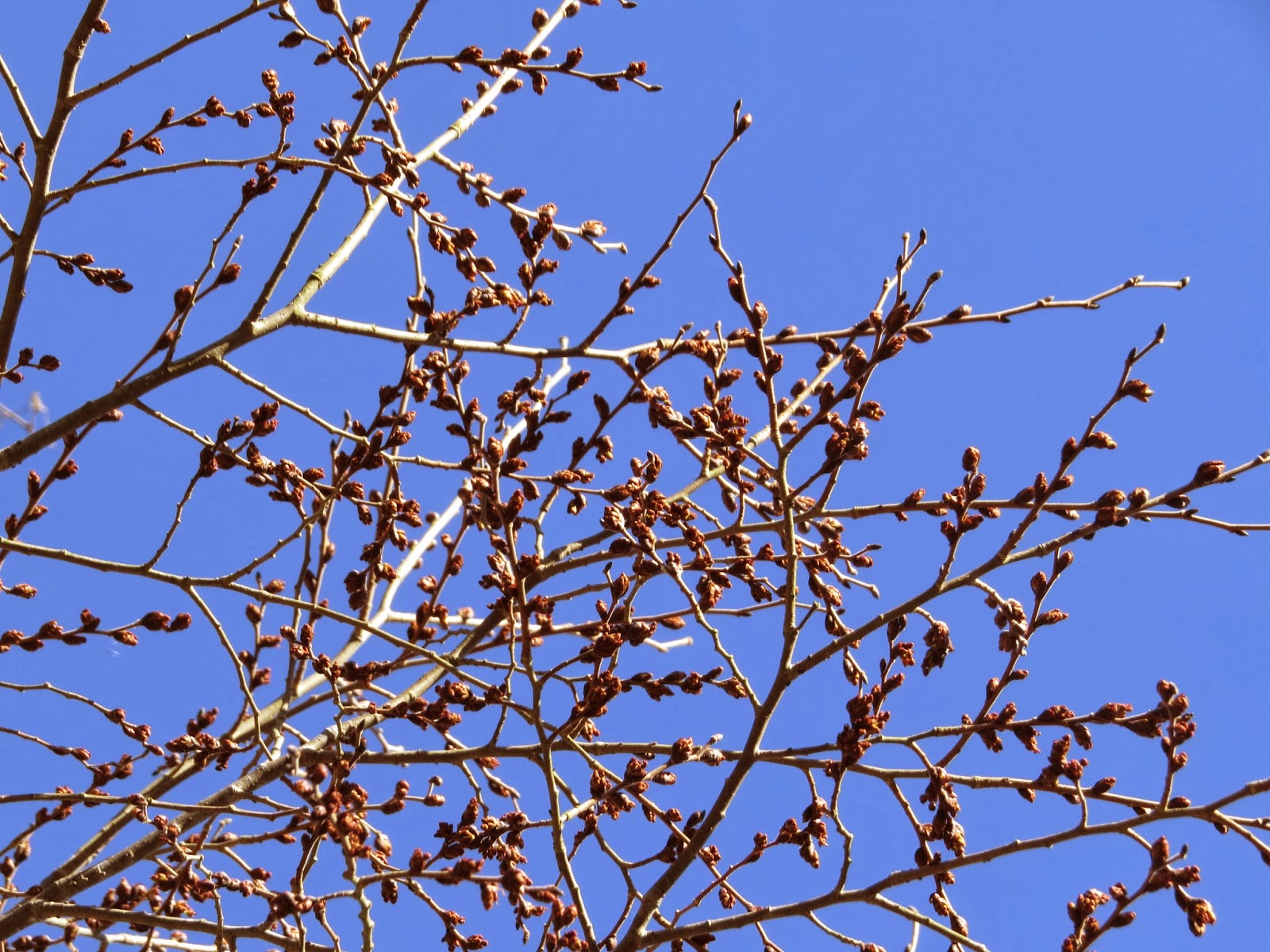Our first stop was a hibernacula-rich area just down the road. For those unfamiliar with the term, hibernacula is the plural form of hibernaculum. It's a Latin word that translates (at least according to what I've read) as "tent for winter quarters." So basically, it's just a sheltered place for an organism that is not active in the winter to hang out. The hibernacula in our case shelter a variety of snakes over the winter. Many people don't realize that snakes will emerge on warm, sunny days in the winter to do a little basking. They are usually quite slow in there reactions when they first emerge, making them vulnerable to predation. When we go looking for them we are careful to maintain our distance so as not to stress them out too much. Zoom is a wonderful feature for a camera to have!
Okay, enough lecturing! On to the pictures:
The snake is a Northern Black Racer, Coluber constrictor constrictor, and behind it you can see the hibernaculum from whence it came. The shelter was formed by the root ball of a tree that blew over during Hurricane Isabel in 2003. This particular area is dotted with numerous similar shelters. One interesting note about Black Racers: they eat other snakes. Perhaps this one chose its winter shelter with hopes of easy pickings come Spring.
Here's a close up of the Racer's big, beautiful eye. I don't often have an opportunity to zoom in quite so close on one of these snakes -- they are called "Racers" for a reason!
The Racer was our first snake of the year and the next photo shows our second.
Our old friend, the Cottonmouth (or Water Moccasin, if you prefer),
Agkistrodon piscivorus piscivorus
This is a venomous snake. If you find yourself in our neck of the woods, just be aware and allow this snake enough room for both of you to feel comfortable. If you get too close, you will find out why they are called "Cottonmouths." If you don't heed their warnings, you may find out what their venom does. But I have discussed this species in numerous other posts so if you are interested, you can search the blog for more information.
As we headed out onto the pond in our canoe, we discovered that snakes weren't the only reptiles out and about on such a fine day in February. There were turtles out by the score.
One little gut that we paddled into was full of Eastern Painted Turtles, Chrysemys picta picta .
I snapped photos of four of them as they soaked up the rays.
I love the red on the tail of this one.
Draped ever so casually on this log, this male kept a wary eye on us. I'm pretty sure it's a male because of those long claws on the front feet. If I had seen its tail, I could say with more certainty.
This one was serious about maxing out its surface area to sun ratio.
We also happened upon this busy fellow
in the same little gut as the Painted Turtles.
It's a muskrat, Ondatra zibethicus.
We saw many other creatures enjoying the respite from the cold but I've run out of time to share them today. Our break was all too brief and it seems we're back in the deep freeze for the next few days. When time and Mother Nature allow, I'll head back out to bring you some more images from this place we so love. If you've enjoyed learning about our little corner, please visit again!
























